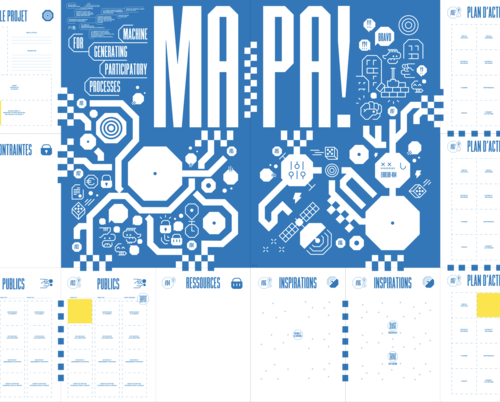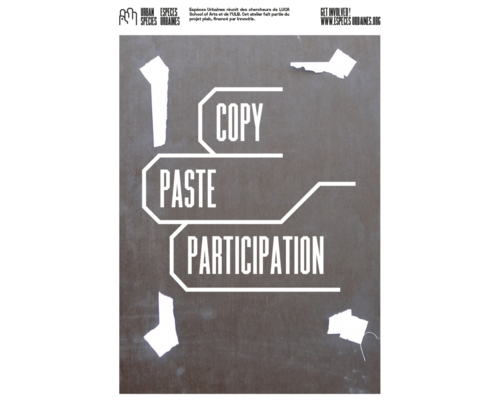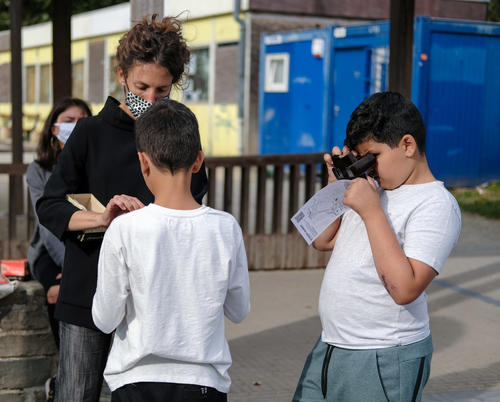Interventions
Mobile unit for a local sustainable mobility hub
For this intervention, the SUCIB team co-designed, developed and assembled a ‘mobile unit’ for a Brussels civic organization opening a new local ‘sustainable mobility hub’ (RenovaS Stephenson), which informs people about sustainable mobility practices. The installation aims at sensitizing neighbourhood inhabitants about the interrelatedness of urban activity (mobility practice), urban issues (air quality) and governmental measures for environmental change (low-speed limit). The installation is showcased in the mobility hub’s shop window and used as a pedagogical tool for school visits.
We designed and built an interactive media installation that features three networked Lightboxes accompanied by laser-cut infographic panels, a rotary switch button and a particulate matter (PM) air quality sensor. One Lightbox features an animated ‘30’ sign, triggered by a motion detector, reminding passers-by of the rights and obligations the 30 km/h traffic rule implies. A second Lightbox is connected to a rotary switch which polls people about their individual mobility habits and displays the cumulative statistics using a bar chart. In this way, local inhabitants can compare their own mobility habits to the overall distribution in their neighbourhood. A third Lightbox receives data from a PM air quality sensor featuring a cloud figure updated on the local air quality every ten seconds according to an air quality colour code. The latter serves to raise awareness of the neighbourhood air quality and provide an occasion to spark discussion among inhabitants, which is through real-time, hyper-local data flow. Putting the three Lightboxes together in one installation indicates the interrelatedness of the issues they refer to. For each Lightbox, a laser-engraved wooden information board contextualises the displayed data, indicating exactly why the data is relevant and important. For instance, air quality is linked to the diseases that exposure to excess particulate matter can cause.
While the PM sensor is put on the building's façade, the three Lightboxes and rotary controller are held together by a tubular system. With a specific design figuration, we aim at fostering civic, environmental and more-than-human sensitivity in urbanites in a two-fold way. In a first-degree reading, the installation design allows people at a glance to see the interrelatedness of urban activity (their and other citizen’s mobility habits), urban issues (air quality), and governmental measures for environmental changes (low-speed limit). However, what is particular about its design is that it confers it an anthropo-zoo-technomorphic allure, as the installation has: a tentacular base on wheels; integrates a humanoid-robotic figure with a bar chart display as a face and a rotary switch connected to the end of its arm; an animal-like figure, also with a display face, clinching on in a nonhuman manner to the installation; and a cloud figure floating above, yet firmly attached to all the other entities. In a second-degree reading, one can thus discover a speculatively fabulated technological critter as a companion to the neighbourhood!
Team
Concept and coordination: Urban Species
Technical development of the installation: Urban Species
Participating organization: vzw RenovaS asbl/wijkantenne Stephenson
Place of intervention
RenovaS wijkantenne Stephenson, Vanderlindenstraat 151-153, 1030 Schaerbeek/Brussels (BE)
Intervention date/period
September 2019 - ongoing







